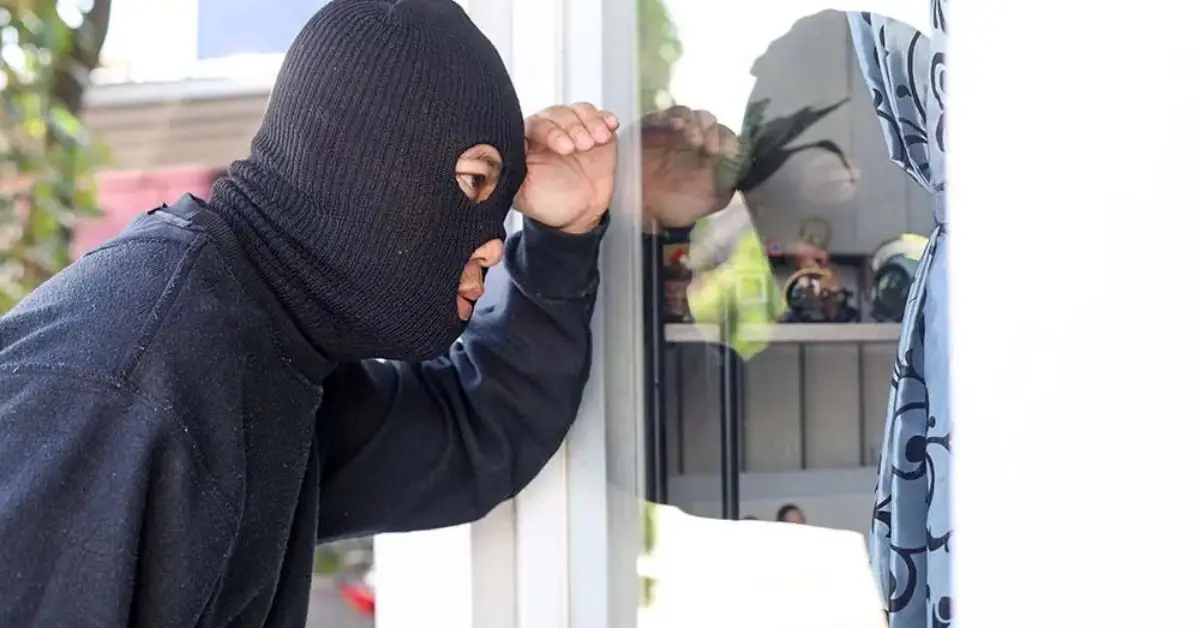Move-In Ready? Not Until You Handle These 5 Must-Do Tasks
I still remember the day I got the keys to my first home—excited, nervous, and honestly, a little overwhelmed. Everyone talks about paint colors and furniture, but no one really tells you what to do the moment you walk through the door.
If you’ve just bought a house, first—congratulations. Second, now is the time to focus on the things that actually protect your home and your peace of mind. The things that don’t feel urgent until something goes wrong.
This list isn’t fluff. These are five essential maintenance steps that most homeowners wish they’d done sooner. I’ve learned them the hard way, and I’m sharing them here so you don’t have to.
Let’s start with the first one—arguably the most important.
1. Secure the House First — Locks, Alarms, and Peace of Mind
The first thing I did after buying my home? Changed every single lock.
You don’t know how many people had access to your place before you moved in—real estate agents, contractors, tenants, neighbors. It’s not paranoid; it’s smart. Spend that first evening swapping out locks or getting them rekeyed. If you’re going with smart locks, set up the app and change any default access codes.

Right after that, check every smoke detector and carbon monoxide alarm. Don’t assume they work just because the previous owners left them. I once found one with no battery and another expired five years ago. If you don’t have a fire extinguisher, get one for the kitchen. It’s one of those things you don’t need until you really do.
And while you’re at it, look into your home’s security system—if one exists. Change any codes left behind, and if you’re planning to install one, schedule it before furniture or routines get in the way.
Pro Tip: According to Homes for Heroes, testing alarms and changing locks are non-negotiables for first-time buyers. Start safe, then do everything else.
This step isn’t about being dramatic—it’s about starting fresh, taking control, and sleeping well that first night.
What about you? Did you rekey the locks before moving in, or trust the old keys?
2. Deep Clean and Handle Pests Before You Settle In
If you haven’t moved your stuff in yet, you’ve got a golden window. This is the best—and honestly, the only—time to deep clean every corner of the house without having to work around furniture and boxes.
Start with the places you can’t easily reach later: vents, behind appliances, inside cabinets, baseboards, carpets. Even if the previous owners “cleaned,” their version of clean may not match yours. I once pulled out a fridge and found a full onion behind it. No thanks.
Next: pests. You might not see them yet, but that doesn’t mean they’re not there. Ants, roaches, and even mice are easier to deal with before they’ve settled in. Call a pest control company or do a professional-grade DIY treatment. And check for signs—droppings, chew marks, old traps—especially in the basement, attic, and under sinks.
Fact: According to Better Homes & Gardens, a pre-move deep clean combined with early pest control sets the foundation for a healthier, safer home.
You don’t get this chance twice. Once furniture and rugs are down, deep cleaning becomes harder, and pests are harder to track. Do it now, and you’ll thank yourself every time you open a cabinet and find… nothing crawling.
What’s the first thing you’re planning to clean—or are you already unpacking?
3. Check the Big Systems Before They Break
Here’s the truth: most major home repairs don’t just show up overnight. They start small—silent leaks, clogged gutters, dusty filters—and grow quietly into expensive problems.
That’s why your next step is inspecting the core systems that keep your home running.

Start with your HVAC system. Change the air filters right away—especially if you don’t know when they were last replaced. A dirty filter chokes airflow, strains your system, and messes with your air quality. If you have central air or heat, it’s also worth scheduling a professional tune-up, especially before seasonal changes.
Next, check your roof and gutters. Walk the perimeter of your house and look for missing shingles, sagging gutters, or water stains on the ceiling inside. Even a small gutter clog can lead to foundation damage over time if water isn’t flowing away from the house.
Don’t skip the sump pump, if your home has one. Pour a bucket of water in and make sure it turns on and drains properly. A failed pump during a storm is one of those nightmares you never forget.
Also, give your water heater and visible plumbing a once-over. Look for rust, leaks, or corrosion around the base and connections. If something feels off—like slow drains, strange smells, or dripping sounds—don’t ignore it.
Backed by data: According to The Zebra, homeowners who regularly check HVAC, roof, and plumbing systems spend 40% less on emergency repairs over 5 years.
Doing these checks early doesn’t just save money—it gives you a baseline. You’ll know what’s “normal” in your home, so when something changes, you catch it fast.
Have you walked your roofline or peeked in the attic yet? Now’s the time.
4. Take Care of the Appliances That Quietly Keep You Going
It’s easy to overlook your appliances when they’re running fine—but most issues start from tiny things you never see. A little routine now can save you hundreds later, not to mention prevent some serious safety risks.
Let’s start with the dryer. Every year, thousands of house fires start from clogged lint buildup. You probably clean the lint trap after every load (hopefully), but the real danger is in the vent that runs behind the dryer and out the wall. Vacuum it out or have it professionally cleaned—especially if you notice clothes taking longer to dry.
Then check your refrigerator coils—they’re usually on the back or underneath. If they’re covered in dust, your fridge is working twice as hard and costing you more in energy. A quick vacuum brush can extend its life. While you’re at it, you might want to check which appliances are secretly draining power when not in use—here are 5 you should consider unplugging to cut down your electric bill.
Dishwasher acting funky? Remove the filter and give it a deep clean. Most people never touch it, but old food buildup leads to odor, cloudy glasses, and clogs. It takes ten minutes, and your dishes will thank you.
One smart habit to build right away: flush your drains once every couple months with baking soda and vinegar. It’s cheap, chemical-free, and keeps gunk from building up in your pipes.
Most of these tasks don’t need tools, a plumber, or even more than 30 minutes. But over time? They’ll add up to serious savings and fewer “Why is this leaking at 2am?” moments.
When’s the last time you cleaned behind an appliance—or have you never dared to look?
5. Walk Your Home Like You’re Inspecting It—Because You Are
One of the best habits you can build as a homeowner? Walk your house regularly—inside and out—and actually look at it. I don’t mean just glancing at your walls while grabbing coffee. I mean inspecting like it’s your job.

Do this once a month: start in one corner of the house and move room to room. Look at ceilings, baseboards, under sinks, corners, windows, outlets. You’re checking for cracks, moisture, stains, drafts, or anything that wasn’t there before.
Then walk around the outside. Look at siding, vents, the roofline, gutters, downspouts, foundation. Trim plants away from the walls and check for signs of pests or weather damage. You’ll catch early issues—like a small crack near the foundation or water pooling in one spot—that can turn into expensive repairs if ignored.
Real homeowner insight: On Reddit, dozens of first-time owners said their biggest regret was not spotting mold, rot, or water damage sooner—because they weren’t looking.
Also, start thinking in seasons. Winterize your pipes, clear leaves in fall, tune up HVAC before summer, check attic vents before spring. A simple quarterly checklist can prevent emergencies. And if you’re heading out of town, don’t forget to prep your home properly—these 10 devices should be unplugged before any trip to avoid risks and save money. And over time, you’ll know your house better than anyone else.
This kind of walkthrough doesn’t cost a dime. But it builds the mindset of ownership—real ownership—where you don’t just live in your house. You take care of it before it demands your attention.
How often do you walk your own place with a purpose—not just pass through it?
Your House Won’t Take Care of Itself—But You Can
Buying a home is a big step. If you’re still house hunting or considering something brand new, don’t miss these 10 must-know tips before buying a new construction home. But what really makes it yours isn’t the mortgage or the keys—it’s the way you take care of it. The five things we just covered? They’re not chores. They’re how you protect your investment, your safety, and your peace of mind.
I’ve seen what happens when homeowners wait too long to act. A $20 fix turns into a $2,000 repair. A forgotten alarm battery becomes a near miss. It’s not about fear—it’s about ownership. These small tasks are your first line of defense.
Start simple. Don’t try to do everything in a weekend. Pick one thing today. Change a filter. Walk your roofline. Check under the sink.
And if you’ve already done a few of these—respect. You’re ahead of the game.
What’s the first maintenance habit you’ve added to your homeowner routine? Or which one do you still need to tackle? Drop a comment or share your own tip—because real advice from real homeowners helps all of us.
Want more smart tips like these? Visit Build Like New for practical home advice that actually works.
Disclaimer: This article is for informational purposes only and doesn’t replace professional advice. Always consult licensed experts for repairs, safety issues, or major home systems.


